Portugal: New border control system for Schengen countries kicks in
Former Timor Leste deputy prime minister Mário Carrascalão dies in Dili

Lusa (File photo) / Mário Carrascalão
The former deputy prime minister of Timor-Leste, Mário Carrascalão, died today at the Guido Valadares National Hospital in Dili after having suffered a heart attack a day after being awarded the country’s highest decoration.
Carrascalão, who was a governor during the Indonesian occupation and deputy prime minister after independence, did not succeed in generating consensus among the East Timorese, but worked a large part of his life towards it, opening the door to dialogue between the resistance and the Indonesian occupiers. He died a day after the head of state, Taur Matan Ruak awarded him the Great Necklace of the Order of Timor-Leste, the country’s highest decoration.

Timorese leaders recalled him as the voice denouncing the situation in the territory, even as Governor appointed by Jakarta (1982 to 1992), and his role in allowing the first opening of East Timor, which led many East Timorese to study in Indonesian universities. “He saved hundreds of lives, forced the opening of East Timor to the world, and gave thousands of young East Timorese the opportunity to graduate. But perhaps more importantly, he managed to persuade the Indonesian military command in Timor-Leste to talk to Xanana,” former president José Ramos-Horta wrote about him in October 2015.
Carrascalão suffered a heart attack while driving his car in the Farol neighbourhood of Dili. The car climbed the sidewalk and crashed into a pole. Witnesses told Lusa that people on the scene took Carrascalão to hospital, where medical teams pronounced him dead.
“Yesterday we were all at family dinner and he was in a very good mood. He’d just been awarded and we were celebrating,” said sister Angela Carrascalão.
The pictures of the award ceremony dominate social networks in Timor-Leste, where condolences from family, friends, Timorese leaders and ordinary citizens followed closely on the celebrations of the 15th anniversary of the restoration of independence on Saturday.
Advocate for consensus and dialogue
Carrascalão, who was born in Venilale in 1937, dedicated many years of his life to Timorese politics, like many of his 11 brothers. After independence, he founded the Timorese Social Democratic Party and became deputy prime minister in the fourth constitutional government, led by Xanana Gusmão.
The third governor appointed by Indonesia to Timor (from September 18, 1983 to September 18, 1992), recalled in an interview with Lusa in 2015 the meetings he had with Xanana Gusmão in Lariguto (1983) and Ariana (1990), opening the door to the first dialogue with the resistance.
“I met him as commander of the Falintil [National Liberation Armed Forces of Timor-Leste]. I would not sit down at the same table if he presented himself as the commander of Fretilin [Independent Revolutionary Front of Timor-Leste]. I felt that, at that time, he represented me and others like me too. When I was talking to Xanana Gusmão I was talking to a representative of the armed wing of the Timorese people, of which the Timorese Democratic Union was already a part,” he explained.

Carrascalão entered school late and he made three years up in one, becoming one of the best students of the Dr. Francisco Machado Lyceum, now one of the wings of the National University of Timor Lorosa’e. He finished the 5th year and, because in Timor at the time there was nowhere to continue studying, went to Lisbon to finish high school in Liceu Camões.
He was exempted from the aptitude test and entered directly into the Higher Institute of Agronomy where he graduated in Agronomy, finishing the course with 19.5 out of 20 and a thesis that was the first ever study done on the Portuguese meek pine.
Returning to East Timor, he assumed the position of head of the agricultural services, which he held when, in 1974, together with Domingos Oliveira, César Mouzinho, António Nascimento, Francisco Lopes da Cruz and Jacinto dos Reis, he founded the UDT.
After the UDT coup, the counter-coup of Fretilin and the short civil war, Carrascalão took refuge in Atambua and afterwards in Jakarta. He joined the Indonesian diplomatic corps in 1977.
In a long interview with Lusa in November 2015, Carrascalão recalled this period, and said he considered that the pressure on Suharto [president of Indonesia between 1967 and 1998] to open East Timor and the neutral stance he maintained as governor, allowed him to maintain the post and help many Timorese, contributing to the independence of the country.
“While I was here as governor, I could not speak out and say that I was on the side of the independents or the integrationists. I had to remain neutral because if I was to be clearly pro-independence I knew beforehand that the Indonesians would remove me because they would not allow me to act against them,” he said. “I thought more about the future. The world could not continue to ignore what was happening in Timor. I asked Suharto to open Timor. Max Stahl would never have entered Timor if I had not asked Suharto to open up the territory,” he said.
This ‘left field’ game was possible because he gained the confidence of the Indonesians, who needed the governor to clean up the image of his predecessors. “I created a favourable image for Indonesia ,and what I asked was granted,” he said. This position and his position did not receive praise from everyone, and, for many East Timorese, as he himself admits, he was seen as a traitor, a collaborator of the occupying regime.
“My actions here in Timor are interpreted in a many ways. Outside I was always seen as a traitor, a Suharto collaborator. For some, it was necessary to create a fictitious enemy. But here in Timor I was one of the people, and I did everything to save this that one and to help,” he said about this period.
Carrascalão said that only his family knew what he was doing and that the Timorese who were in Timor at that time recognised this role, although not all outsiders think so. “Even in my family there were people who were reticent, who thought twice to using the family name so as not to be associated with Mário Carrascalão.”
The funeral of Mário Carrascalão takes place today in Dili. Details are not yet known.


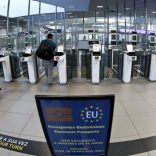
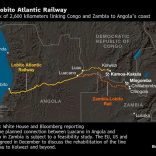



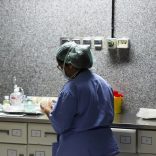

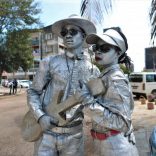
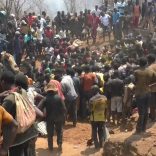
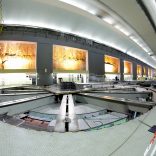

Leave a Reply
Be the First to Comment!
You must be logged in to post a comment.
You must be logged in to post a comment.